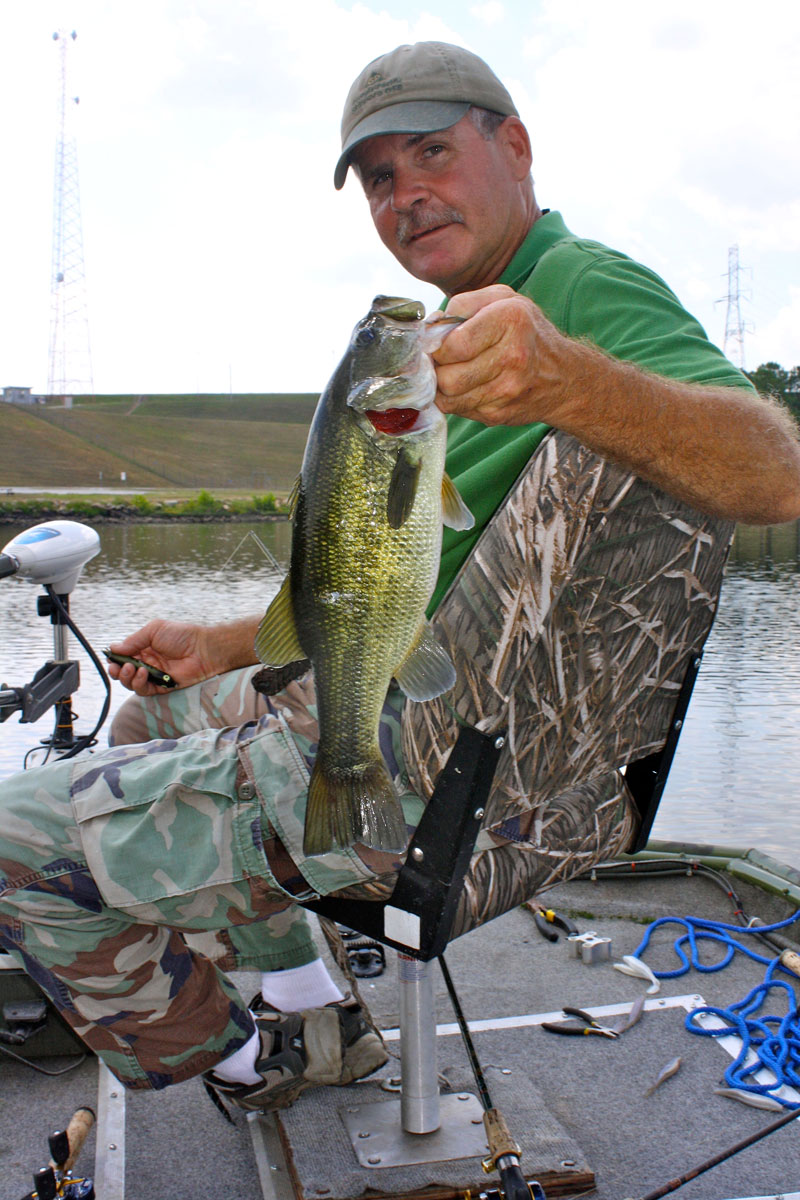
Upper end of small North Carolina lake is great bass destination throughout the fall
Spotted bass have recently become part of the Roanoke Rapids Lake fishery that includes largemouth bass and striped bass.
“We have a lot of spotted bass now,” said guide Tim Biesecker of Roanoke Rapids, N.C. He’s been fishing the small reservoir downstream from Lake Gaston since 1978.
When anglers ask Biesecker about the little-publicized fishery, Biesecker likens it to Tuckertown Lake of the Yadkin River system.
“Both lakes are less than 5,000 acres, almost completely undeveloped. And their shallow rocky and stumpy terrain make them treacherous to navigate,” he said. “They were once great crankbait lakes until they became infested with grass or black mat algae. The recent addition of grass carp to control grass at Tuckertown has eradicated much of the lake’s elodea and hydrilla. But the black mat algae remains, while the grass at Roanoke Rapids Lake has intensified, if anything. As a result, crankbait fishing is confined to small areas of both lakes.”
While spots have become established in the gin-clear waters of Roanoke Rapids, they have yet to appear in the turbid waters of Tuckertown.
Biesecker said the surroundings at Roanoke Rapids Lake have changed in one significant way.
“The (U.S. Army) Corps of Engineers had an issue with the turbines at the hydro dam. So last fall it opened one to two flood gates for more than 6 months and did a lot of damage to the lake,” he said. “Trees have been deposited in areas where there were none.”
Current always improves the fishing
In the fall, Biesecker favors the upper reaches of the lake below Gaston Dam where spots, largemouth and stripers gather to bust shad on the surface in the mornings, evenings and on cloudy days. A long cast with a Zara Spook or Fluke into feeding fish could begin a tug of war with any of the three species.
“Look for current in the fall, whether hydro- or wind-driven,” Biesecker said. “Current usually improves the fishing.”
Huge rocks line the bottom near the dam. So anglers should navigate the area with care.
For bass in grassy places, Biesecker fishes a SPRO frog in black or white into thick grass mats where no other lures dare venture. He employs a heavy-action rod and baitcasting reel filled with 65-pound braid. Black frogs are his choice for cloudy days; white for mornings and evenings.
For grass edges and pockets, he switches to a 7-foot, medium-action spinning rod and 8-pound line using Flukes and plastic swimbaits weighted with 1/8- or 1/4-ounce jigs and unweighted Senkos if the water is clear. If it’s dingy, he favors baitcasting gear and 10- to 12-pound line.
The presence of spots has encouraged him to toss bladed jigs, though he admits they can be a hassle to fish in areas with vegetation.
Biesecker (252-532-1846) has temporarily stopped guiding because of COVID concerns, but he will resume guiding once the latest surge subsides.


Be the first to comment